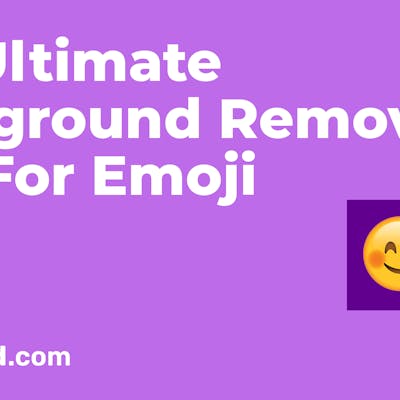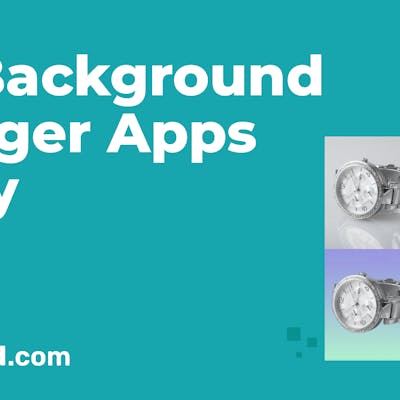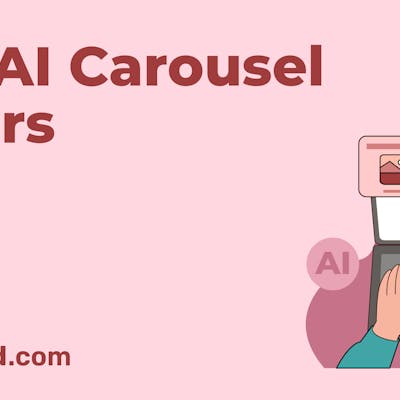Are you a graphic designer with a passion for turning ideas into visual masterpieces? Perhaps you’re just starting your journey in the creative world, or maybe you’re a seasoned pro looking to make your next career move.
No matter where you are in your graphic design career, one thing remains constant: your resume is your golden ticket to unlocking exciting opportunities.
In this guide, we’ll walk you through the process of creating a graphic design resume that doesn’t just showcase your skills but demonstrates your professionalism to potential employers.
Plus, you’ll discover how Simplified’s AI Writer can help you craft outstanding graphic design resumes in just a few clicks!
8 Easy Steps to Creating Impressive Graphic Design Resumes

Writing an attention-grabbing resume isn’t always easy. For instance, how do you know which details to include that’ll leave a lasting impression on potential employers?
But, that’s why we’re here! Whether you’re seeking a freelance or a full-time role, these 8 pointers we’ve compiled will help you construct an outstanding graphic design resume.
1. Begin by adding your contact information
At the very top of your graphic design resume document, you’ll need to write out your contact details.
Include your phone number, email address, and/or a link to your online portfolio, so that hiring managers can easily connect with you and review your previous work examples.
2. Start with a strong resume summary
Your resume summary is simply a concise overview of your relevant experience, accomplishments, and skills. It should be between two to four sentences.
This is especially beneficial if you’re applying for competitive graphic design positions. A summary has the power to instantly capture the attention of busy hiring managers who may be too busy to thoroughly review your portfolio.
Here’s a resume summary example generated with Simplified’s AI Writer:
Highly creative, dedicated, and experienced Graphic Designer with a keen eye for visual aesthetics and more than 6 years of experience in the field. Looking to bring proficient creativity, problem-solving ability, and conceptualizing skills to a Graphic Designer position. Committed to developing innovative design projects with a keen sense of evolving trends and technologies.
4. Include your education
After completing your professional summary, the next step is highlighting your educational history.
If you’re an entry-level graphic designer, this is particularly crucial for you. This is because many employers require candidates new to the field to hold at least a bachelor’s degree when applying for jobs.
In the education section, create an entry for each of your degrees, specifying the degree obtained, the institution attended, and the graduation year if it falls within the last three years.
5. Describe your work experience

Your work experience section should align with the job description’s requirements.
This means you need to tailor this particular section in a way that addresses the skills and qualities the employer seeks. Incorporate specific achievements and responsibilities that showcase your fit for the role.
Here’s a work experience example generated with Simplified’s AI Writer:
Graphic Designer, [Current Company] [Location, Date]
Efficiently crafted various marketing collateral, including print materials, digital assets, and social media campaigns.
Conceptualized and executed visually compelling designs, assisting in establishing strong brand identities.
• Designed diverse multimedia presentations to effectively engage audiences.
Graphic Designer, [Previous company] [Location, Date]
Collaborated with cross-functional teams, transforming ideas into impactful visuals.
Contributed to successful rebranding initiatives, ensuring consistency across different platforms.
Met tight deadlines, showcasing the ability to work effectively in a fast-paced environment.
6. Highlight your key graphic design skills
Let’s face it — many employers look for graphic designers with up-to-date software proficiency and a robust skill set.
So, in your graphic design resume, you’ll need to build a clear, comprehensive skills section that emphasizes both technical expertise and soft skills, which are equally important.
Here are some essential graphic design skills to include:
- Logo creation
- Infographic design
- Product packaging design
- Web design
- Adobe (InDesign, Spark, Photoshop, Express, Illustrator, After Effects, Dreamweaver)
- Figma
- HTML / CSS
- UI/UX design
- Print design
- Typography
- Branding
- Color theory
Aside from technical skills, you need to showcase your soft skills. These may include:
- Communication
- Teamwork
- Leadership
- Patience
- Time management
- Brainstorming
- Research
- Collaboration
- Creativity
- Organization
- Negotiation
- Flexibility
.jpg)
A Graphic Design Resume Sample (Generated with Simplified’s AI Resume Builder)
Generate yours now!
7. Include other beneficial resume sections
You can further elevate your resume by adding supplementary sections that’ll help you stand out.
These may include:
- Awards & Certifications: Highlight any design-related awards, certificates, or courses you’ve completed.
- Projects: Showcase your passion for design through university or personal projects that demonstrate your skills.
- Languages: If applicable, list the languages you’re proficient in.
- Interests & Hobbies: Share personal interests to showcase your personality and compatibility with company culture.
8. Craft a compelling cover letter

One thing you shouldn’t do is underestimate the power of a well-written cover letter. It demonstrates your enthusiasm for the specific role and company.
Follow this structure to effectively write your cover letter:
- Contact Details: Your personal information, including your full name, profession, email, phone number, location, and website.
- Hiring Manager’s Contact Information: Provide the hiring manager’s full name, position, location, and email address.
- Opening Paragraph: Your introduction needs to be compelling. Start by mentioning:
- Your name
- The position you’re applying for
- A concise summary of your experience and a notable achievement.
- The Body: Once you’ve engaged the hiring manager, elaborate on your background. Some points to cover include:
- Explain why you want to work for this particular company.
- Highlight your key skills and explain their relevance to the job.
- If applicable, discuss your past experience in similar industries or roles.
- Closing Paragraph: In this section:
- Summarize any important points from the body of your cover letter.
- Express gratitude for the hiring manager’s time and consideration.
- Conclude with a call to action, such as, “I would welcome the opportunity to discuss in more detail how my experience as an X can contribute to achieving Y for the company.”
- Formal Salutations: End your cover letter with a formal closing, such as “Best regards” or “Sincerely.”
With Simplified’s AI Cover Letter Generator, you can get customized cover letters with keywords and phrases relevant to your target job!
What’s more, its template library is filled with personalized cover letter designs that’ll showcase your professionalism with eye-catching layouts, fonts, and graphics.
.jpg)
A Graphic Design Resume Sample (Generated with Simplified’s AI Resume Builder)
Generate yours now!
How to Write a Graphic Design Resume with No Experience

Creating a resume for your first job as a graphic designer is totally doable, even without loads of formal experience.
Just focus on highlighting your existing qualifications. Consider filling your resume’s experience section with independent design projects, university coursework, or freelance gigs you’ve tackled.
One critical step is assembling a portfolio of your work. This proves to potential employers that, despite your lack of work history, your design skills are up to par for the role.
To do this, you can add a “Portfolio” or “Projects” section to your resume. List the various types of design work you’ve done and provide more details about these projects.
If space is limited on your resume, simply include a link to your portfolio in the header rather than creating a dedicated section.
Related: 10 Best Alternatives For The Teal Resume Builder : Key Features & Pricing
What is the Best Resume Format for Graphic Designers?
Before you can start working on your graphic designer resume, you need to decide on the formatting. Avoid using a nontraditional format as it may make your resume difficult to read.
There are 3 common resume formats you can try out:
- The reverse-chronological resume: This lists your work experiences and education in reverse order, starting with the most recent ones. This format helps employers see your recent experiences and career progression quickly.
- Functional Resume – This format focuses more on your skills and qualifications rather than your work history. It’s useful if you want to emphasize your skills and expertise, especially when your work history might have gaps or isn’t directly related to the job you’re applying for.
- Combination Resume: Acombination resume, as the name suggests, combines elements of both chronological and functional formats. It’s helpful when you want to showcase both your skills and your relevant work experience
Ultimately, the choice belongs to you, but we recommend that you stick to the “reverse-chronological” format as it’s most common.
Alternatively, you may consider a combination or functional layout if they better suit your circumstances. The most important thing is that your resume has a clean layout and is easy to skim.
Tips to Help You Craft A Great Graphic Designer Resume

Here are some simple tips for creating an effective graphic design resume:
1. Keep it concise
Employers usually prefer one-page graphic design resumes. Choose the most essential information to ensure your resume is easy for the hiring manager to read.
You can provide more details about your skills and experience during later stages of the job application process, like in an interview.
2. Customize your resume for each opportunity
While the core content of your resume should remain consistent, take the time to tailor it to each job description. Focus on including information that’s relevant to the specific role.
For example, if there’s a skill or technology mentioned in the job description that you have experience with, include it on your resume.
3. Factor in Application Tracking Systems (ATS)
As a graphic designer, showcasing your creativity is important, but keep in mind that employers often use application tracking systems.
Applicant tracking systems scan resumes for specific keywords to assess if you’re a good fit for the job. Ensure your resume includes relevant keywords naturally.
You can also look at job postings you’re interested in for keyword inspiration.
Keyword examples include:
- Logo design
- Sketch
- Visuals
- Typography
- Infographics
- Campaigns
4. Put your work in context

Use specific examples, outcomes, and numbers where applicable to show how your graphic design work contributed to the success of projects or companies.
5. Review for accuracy
After completing your resume, read it aloud to catch potential grammatical errors and ensure it flows logically.
Cross-check your resume with the information you gathered to verify its accuracy. Asking someone else to review it can also help identify any overlooked mistakes.
6. Use action words
Replace common resume phrases like “responsible for” or “worked in” with powerful action words like “conceptualized,” “designed,” “initiated,” or “spearheaded” to make your responsibilities and achievements stand out.
Related: 6 Best AI Resume Builders to Create Impressing Resumes
The Takeaway
Your graphic design resume is your chance to showcase your skills and personality to potential employers.
By following this comprehensive guide, you’ll surely create a resume that leaves a lasting impression.
And, if you need some assistance, Simplified is up to the task! Its AI resume builder will simplify the resume-making process and generate a designer-quality professional document in mere seconds!
Unlike other resume builders, you don’t need to manually input your information. Simply, input your work experience, skills, education, and industry, and Simplified will generate a compelling graphic designer resume for you!


![10 Best AI Image Restoration Tools to Try in 2025 [Free & Paid] 10 Best AI Image Restoration Tools to Try in 2025 [Free & Paid]](https://siteimages.simplified.com/blog/Best-AI-Image-Restoration-Tools-01.png?auto=compress&fit=crop&fm=png&h=400&w=400)
![How to Use Photoshop AI Generative Fill Feature [2025] How to Use Photoshop AI Generative Fill Feature [2025]](https://siteimages.simplified.com/blog/How-to-Use-Photoshop-AI-Generative-Fill-01-1.png?auto=compress&fit=crop&fm=png&h=400&w=400)
![20 Podcast Thumbnail Ideas to Boost Your Show’s Visual Appeal + Best Practices [2025] 20 Podcast Thumbnail Ideas to Boost Your Show’s Visual Appeal + Best Practices [2025]](https://siteimages.simplified.com/blog/Podcast-Thumbnail-Ideas-to-Boost-Your-Show-02-1.png?auto=compress&fit=crop&fm=png&h=400&w=400)




